Well while I have the Crush project build apart I painted the two GTX 1080’s and after that, I had a little extra time. To fill that time I went ahead and put the two cards on our testbench and ran them through our standard test suite to see how they perform. I put all of the results together and today I’m tossing the up for anyone who wants to see how the 1080’s compare in SLI to a single GTX 1080, two RX 480’s, or two GTX 1070’s. As always with our SLI/Crossfire articles, it is mostly just the results with very little content beyond that, so you can use the information to form your own opinions.
Article Name: GTX 1080 Founders Edition SLI Testing
Products Provided by: Nvidia
Written by: Wes
Pictures by: Wes
Amazon Link: HERE
Link to how to paint your Founders Edition cards
In case you were curious what driver or firmware version I was running here is a shot of the GPUz taken during testing. These are two completely stock cards other than being bright orange so you can expect numbers to be a little higher with overclocked non-founders edition cards.
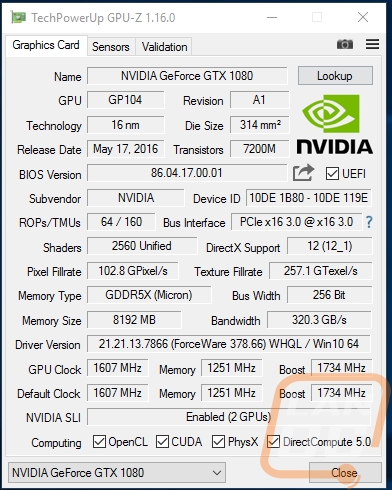
Our Test Rig and Procedures
|
Our Test Rig |
||
|
CPU |
Intel i7-5960X |
|
|
Memory |
Kingston HyperX FURY Black 32GB Quad Channel Kit 2666 MHz |
|
|
Motherboard |
Gigabyte X99-SOC Champion |
|
|
Cooling |
Noctua NH-U12S Cooler |
|
|
Power Supply |
Thermaltake 850w |
|
|
Storage |
Kingston Hyper X Savage 960GB SSD |
|
|
Case |
Dimastech Test Bench |
|
|
OS |
Windows 10 Pro 64-bit |
|
|
Our Testing Procedures |
|
|
3DMark |
The same goes for the most current version of 3DMark using the Fire Strike benchmark in normal, extreme, and ultra settings |
|
Unigine Valley Benchmark 1.0 |
Using the Extreme HD preset to get an average FPS |
|
Catzilla 4k |
Default tests for 1080p, 1440p, and 4k resolutions using the overall score for each as our result |
|
SteamVR |
Default SteamVR test using Average Quality score |
|
VRMark |
Orange and Blue rooms tested, use Average FPS for the result |
|
Deus Ex: Mankind Divided |
Tests are done using the built-in benchmark at High and Ultra graphic settings at both 1080p and 1440p resolutions. |
|
DOOM |
Doom is tested on the Ultra quality setting. Tests are run at 1080p and 1440p using both OpenGL and Vulkan. The benchmark is a basic one using just the average FPS in the opening scene. |
|
HITMAN 2016 |
Fullscreen with V-Sync turned off Detail, Texture Quality, Shadow Maps, and Shadow Resolution all set to their highest settings. We test using both DX11 and DX12 at both 1080p and 1440p resolutions. |
|
Ashes of the Singularity |
Built-in benchmark ran at 1080p and 1440p with graphics settings set to the “Crazy” setting with the exception of turning off V-Sync Mode. The benchmark scenario is set to GPU Focused and we use the Average Framerate for All Batches as the result. Tests are run both in DX11 and DX12 |
|
The Division |
Built-in benchmark ran at 1080p and 1440p with graphics settings set to the default “Ultra” setting with the exception of turning off V-Sync Mode |
|
Bioshock Infinite |
Using the Adrenaline Action Benchmark Tool we run Bioshock Infinite on the “Xtreme” quality setting. This has a resolution of 1920x1080, FXAA turned on, Ultra Texture detail, 16x Aniso Texture Filtering, Ultra Dynamic Shadows, Normal Postprocessing, Light Shafts on, Ambient Occlusion set to ultra, and the Level of Detail set to Ultra as well. We also run this same test at 2560x1440 using the same settings as mentioned above. |
|
Tomb Raider |
Using the Adrenaline Action Benchmark Tool we run Tomb Raider on the “Xtreme” quality setting. This has a resolution of 1920x1080, Exclusive Fullscreen turned on, Anti-Aliasing set to 2xSSAA, Texture Quality set to Ultra, Texture Aniso set to 16x Aniso, Hair Quality set to TressFX, Shadow set to Normal, Shadow Resolution on High, Ultra SSAO, Ultra Depth of Field, High Reflection quality, Ultra LOD scale, Post-Processing On, High Precision RT turned on, and Tessellation is also turned on. We also run this same test at 2560x1440 using the same settings as mentioned above. |
|
Hitman: Absolution |
Using the Adrenaline Action Benchmark Tool we run Hitman: Absolution on the “Xtreme” quality setting other than the MSAA setting is turned down from 8x to 2x. That setting puts the resolution at 1920x1080, MSAA is set to 2x, Texture Quality is set to High, Texture Aniso is set to 16x, Shadows are on Ultra, SSA is set to high, Global Illumination is turned on, Reflections are set to High, FXAA is on, Level of Detail is set to Ultra, Depth of Field is high, Tessellation is turned on, and Bloom is set to normal. We also run this same test at 2560x1440 using the same settings as mentioned above, except on the “high” setting. |
|
Sleeping Dogs |
Using the Adrenaline Action Benchmark Tool we run Sleeping Dogs on the “Xtreme” quality setting. That means our resolution is set to 1920x1080, Anti-Aliasing is set to Extreme, Texture Quality is set to High-Res, Shadow Quality is High, Shadow Filter is set to high, SSAO is set to High, Motion Blur Level is set to High, and World Density is set to Extreme. We also run this same test at 2560x1440 using the same settings as mentioned above. |
|
Total War: ROME II |
Ultra-setting tested at 1920x1080 and 2560x1440, built in forest benchmark |
|
Middle-earth: Shadow of Mordor |
Using the built-in benchmark we test with ultra settings at 1440p |
|
Sniper Elite 3 |
Ultra-setting tested at 1920x1080 and 2560x1440, built in benchmark |
|
Thief |
Tested using the “Very High” setting at 1920x1080 and 2560x1440, with Vsync turned off |
|
Folding at Home 2.2 |
Using the Folding at Home benchmark 2.2.5 set to OpenCL, WU set to dhfr, and run length set to the default 60 seconds. We test at both double and single precision and use the score at the result |
|
CompuBenchCL |
Video Composition and Bitcoin tests |
|
Unigine Valley Benchmark 1.0 heat testing |
We run through Unigine Valley using the “Extreme HD” preset for 30 minutes to test in game cooling performance with the fan speed set to auto then again with the fan set to 100%. |
|
Power Usage |
Using Unreal Valley Benchmark 1.0, we get our “load” power usage number from the peak power usage during our test. We get our numbers from a Kill-A-Watt connected to the test benches power cord. |
|
Noise Testing |
Our Noise testing is done using a decibel meter 3 inches away from the video card on the bottom/fan side of the card. We test an idle noise level and then to get an idea of how loud the card will get if it warms all the way up we also turn the fan speed up to 50% and 100% and test both speeds as well. The 100% test isn’t a representation of typical in-game noise levels, but it will show you how loud a card can be if you run it at its highest setting or if it gets very hot. |
Benchmarks
Like I said in the opening, I don’t really talk too much about the results. Not to mention, beyond jumping up to a pair of Titan XP’s, this is as good as it gets currently. So it's no surprise that in most of the tests the GTX 1080’s in SLI top the charts. In fact, in a few cases, they completely ruined the charts, making all of the 1080p focused cards hardly show up in the graphs. It also forced me to split up the 3DMark and Catzilla benches as well. That said SLI performance is highly dependent on having SLI support for the game that you are trying to play. I did include all the unsupported game results as well and if you look close you will notice that some of them even perform worse than a single GTX 1080. Something to keep in mind when considering going SLI.
Synthetic Benchmarks


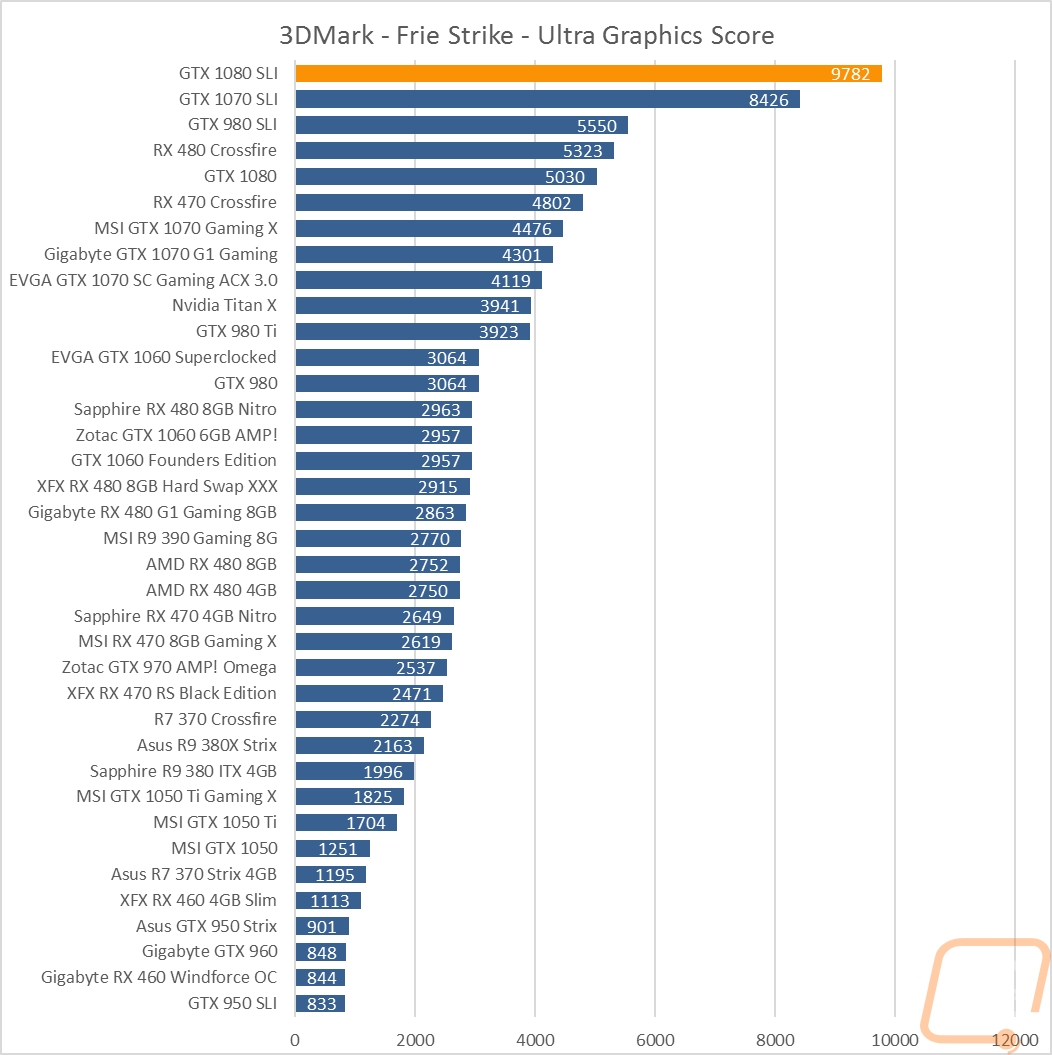
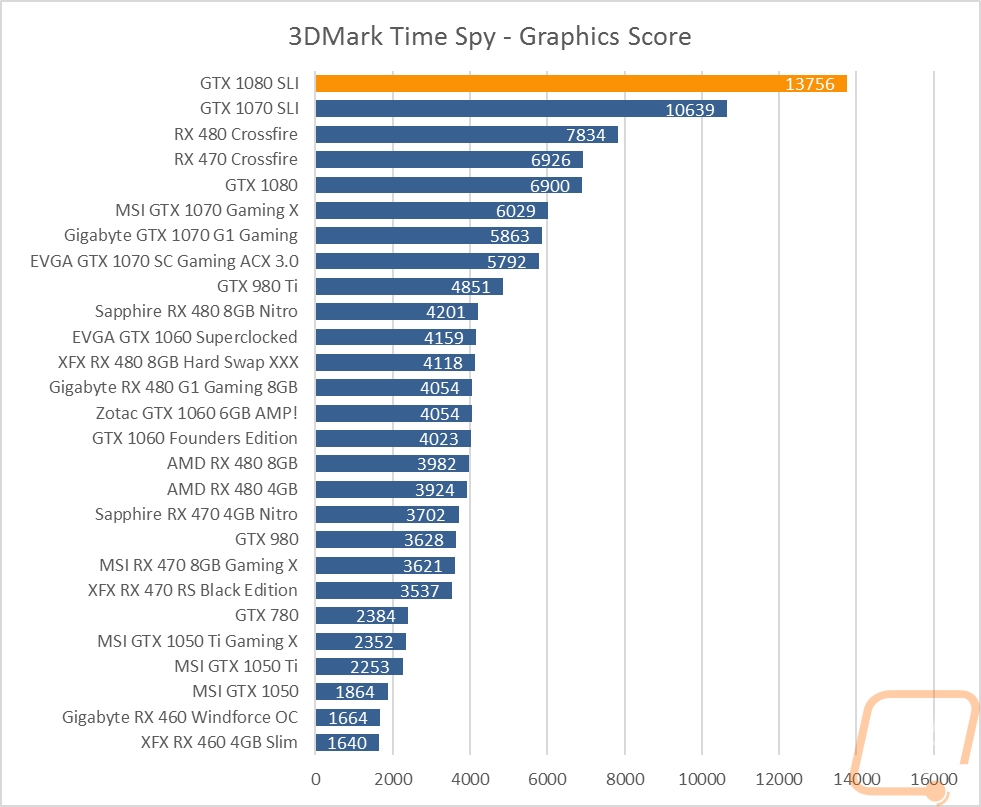
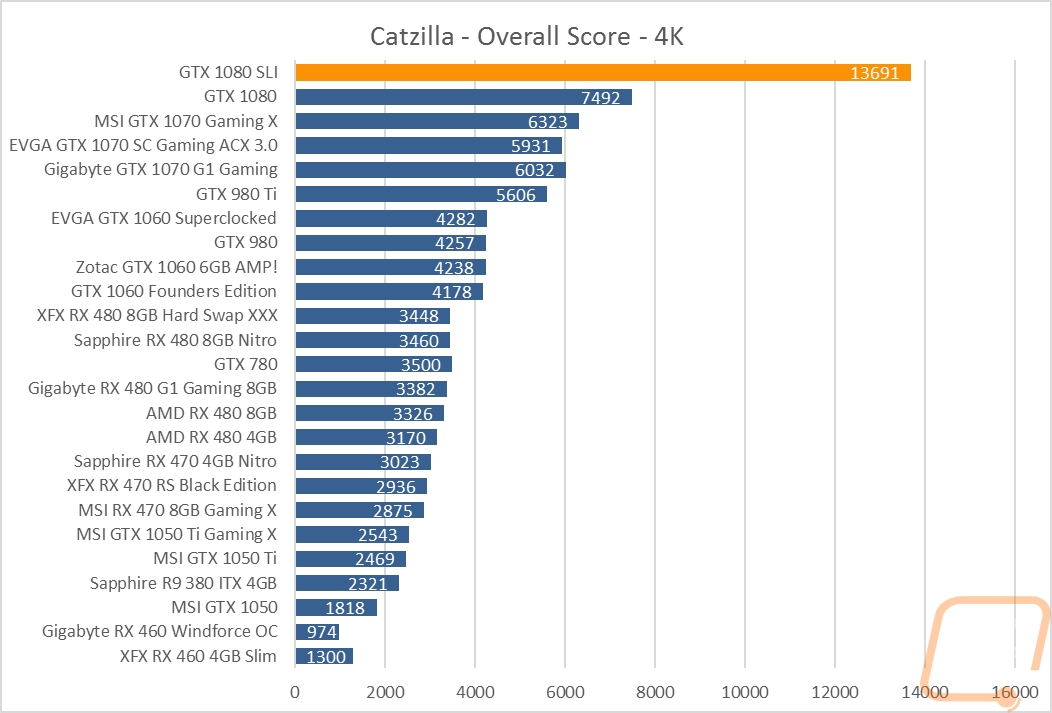
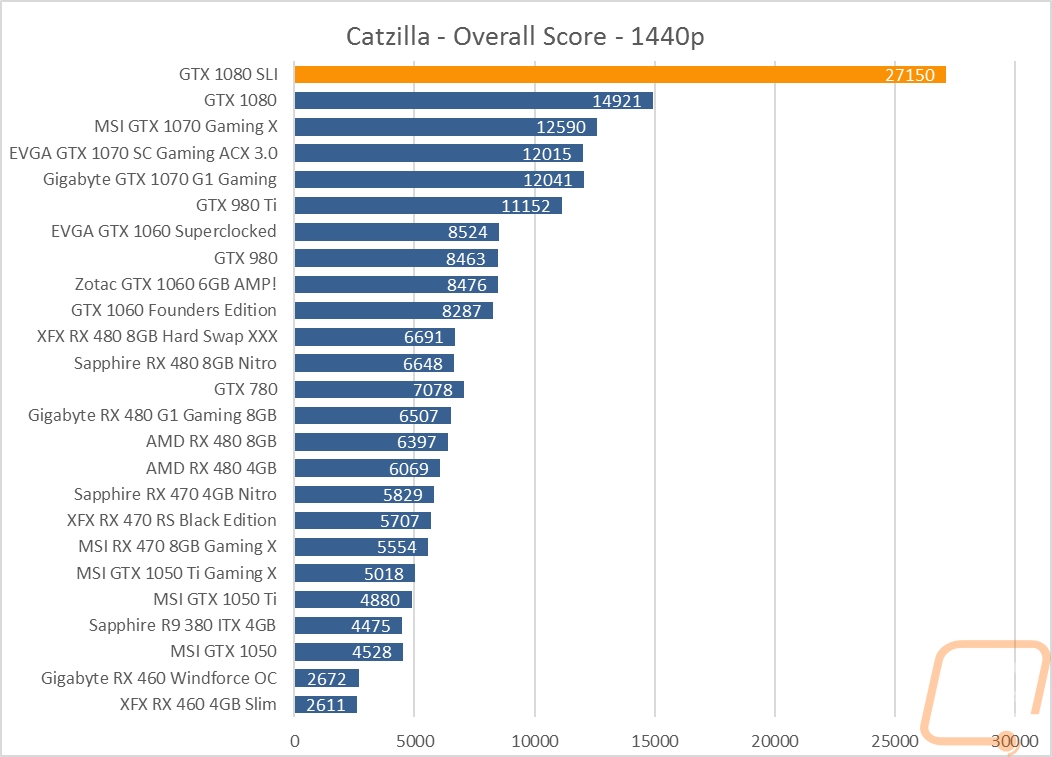
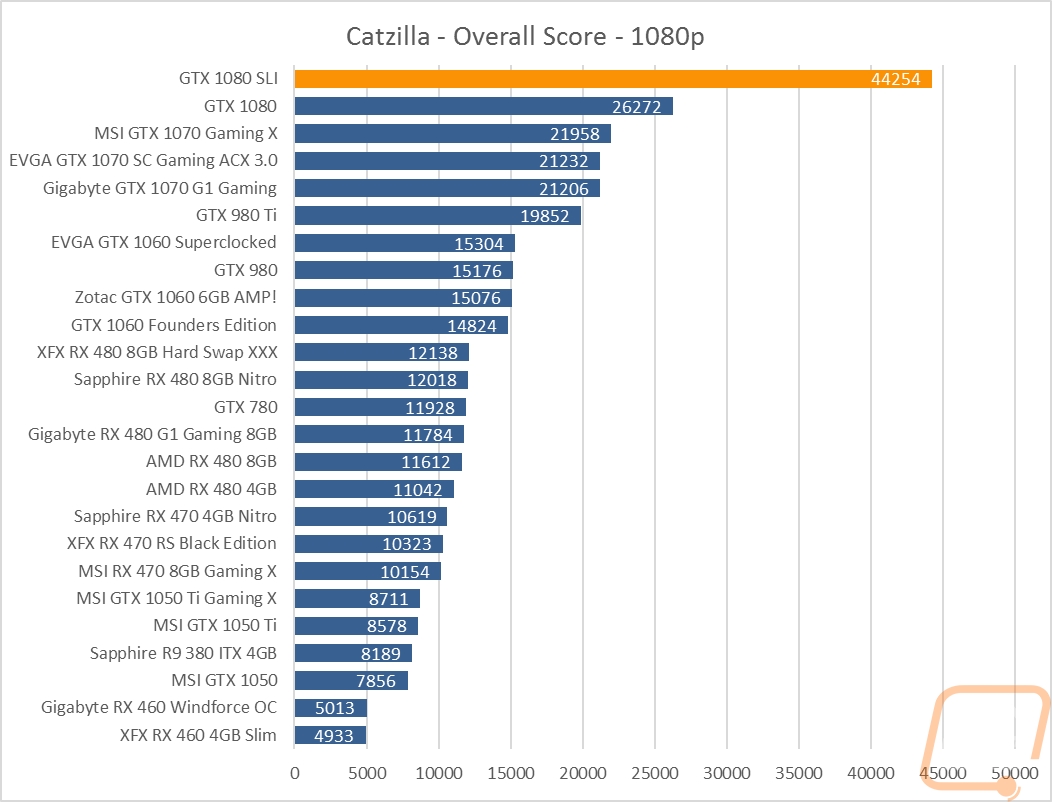
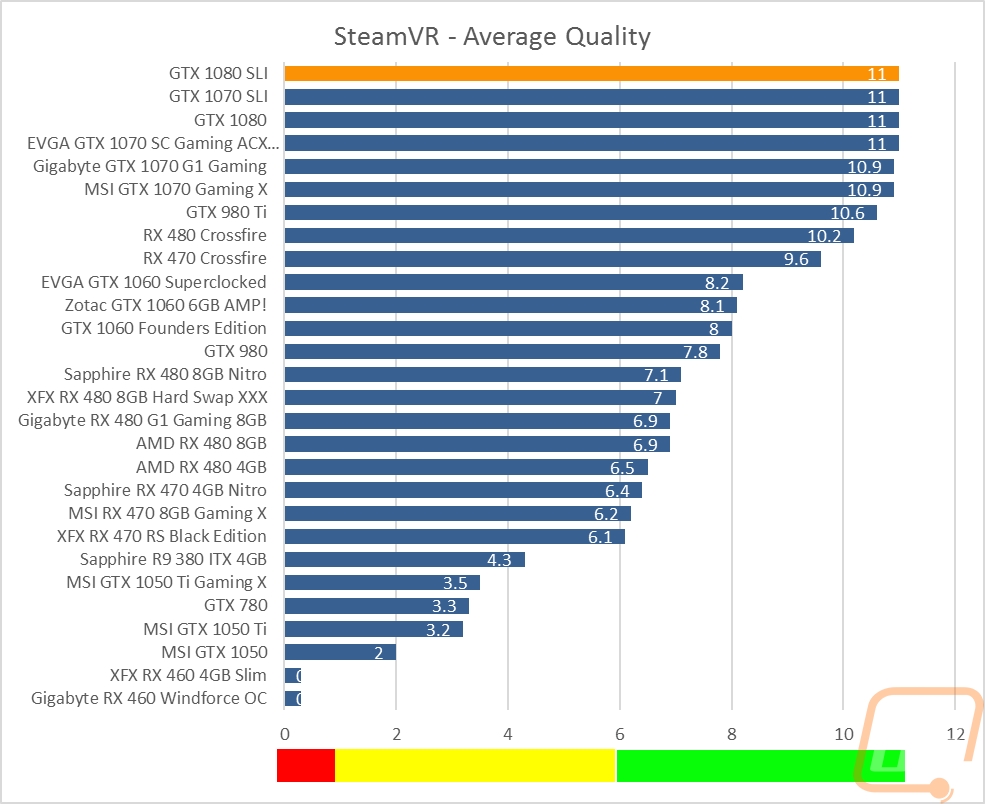

Synthetic Benchmark Without SLI Support
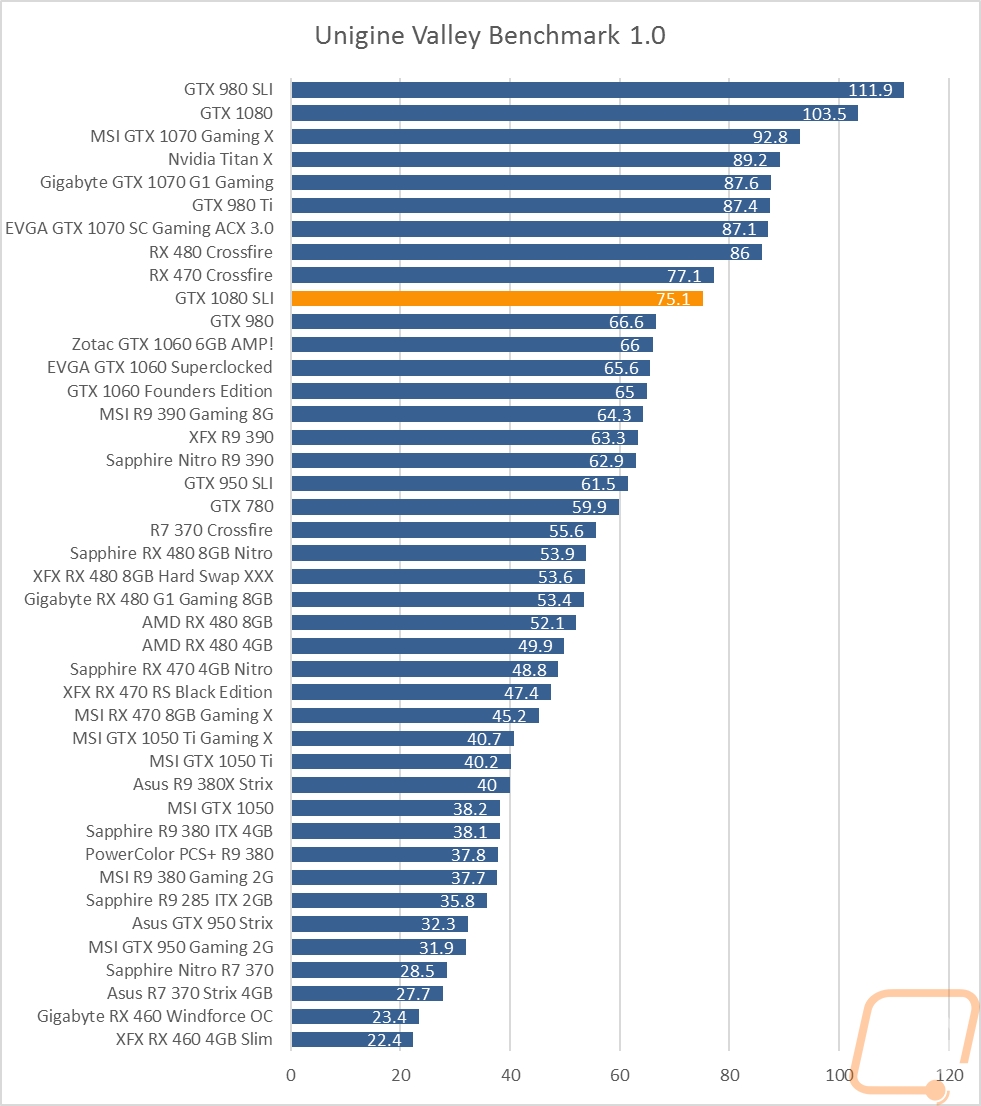
In Game Benchmarks with SLI Support
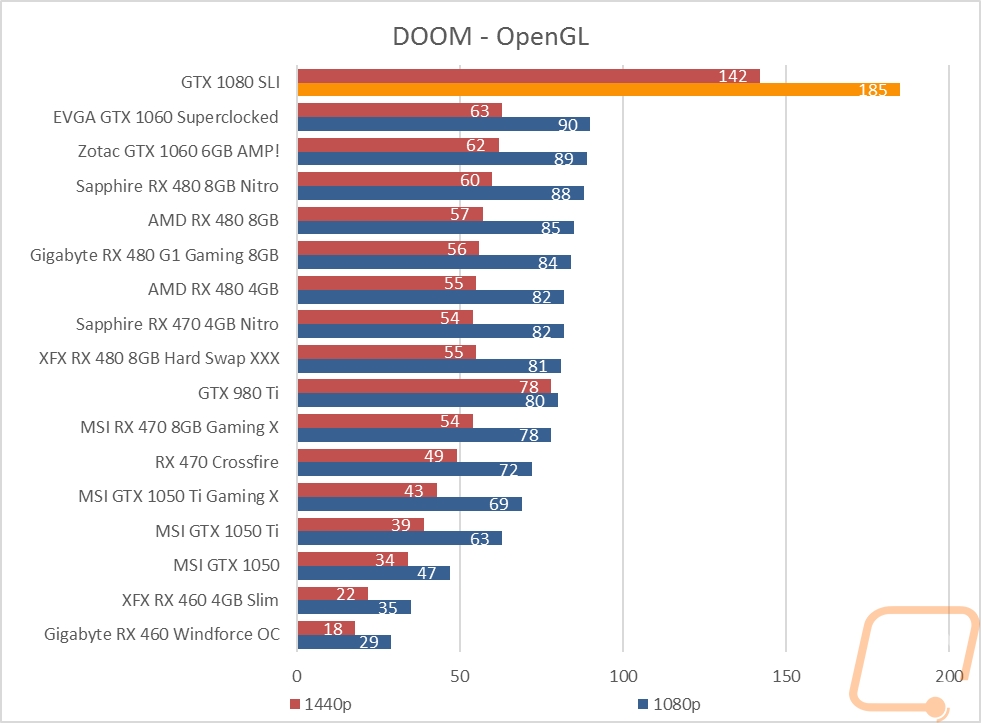
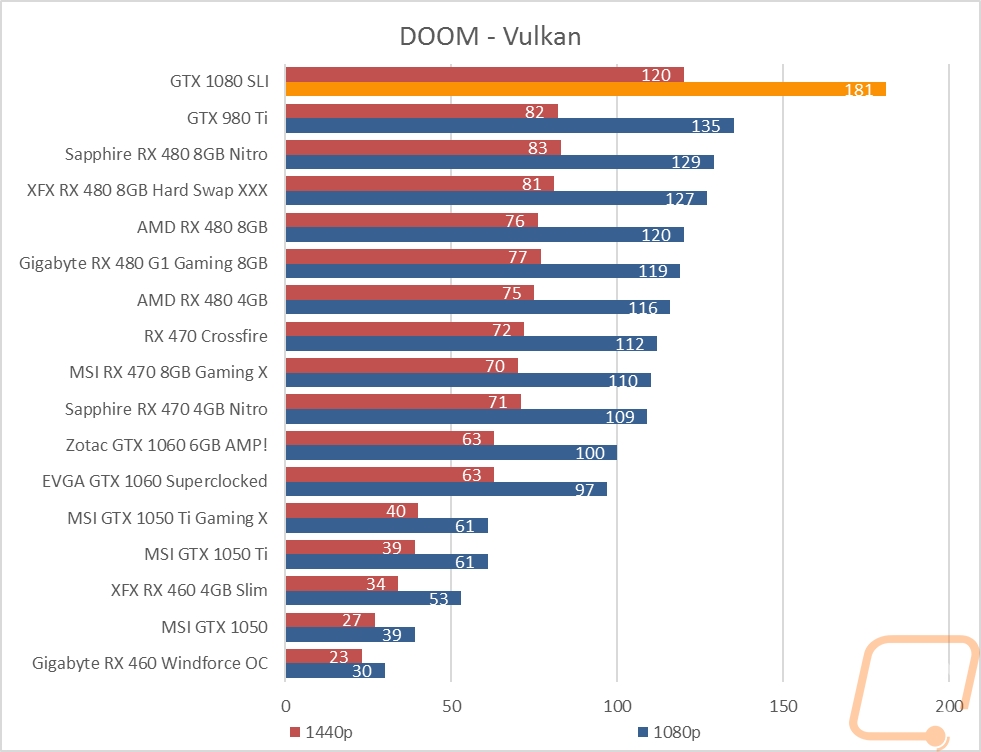
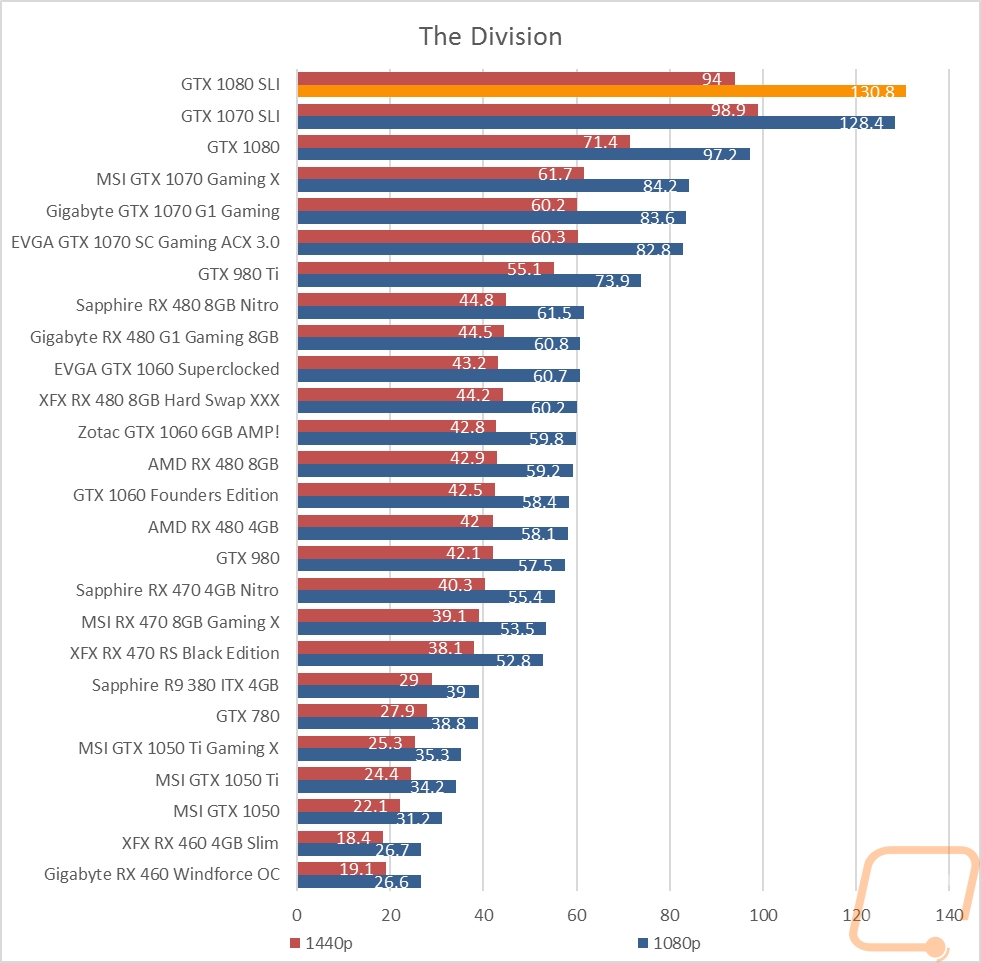

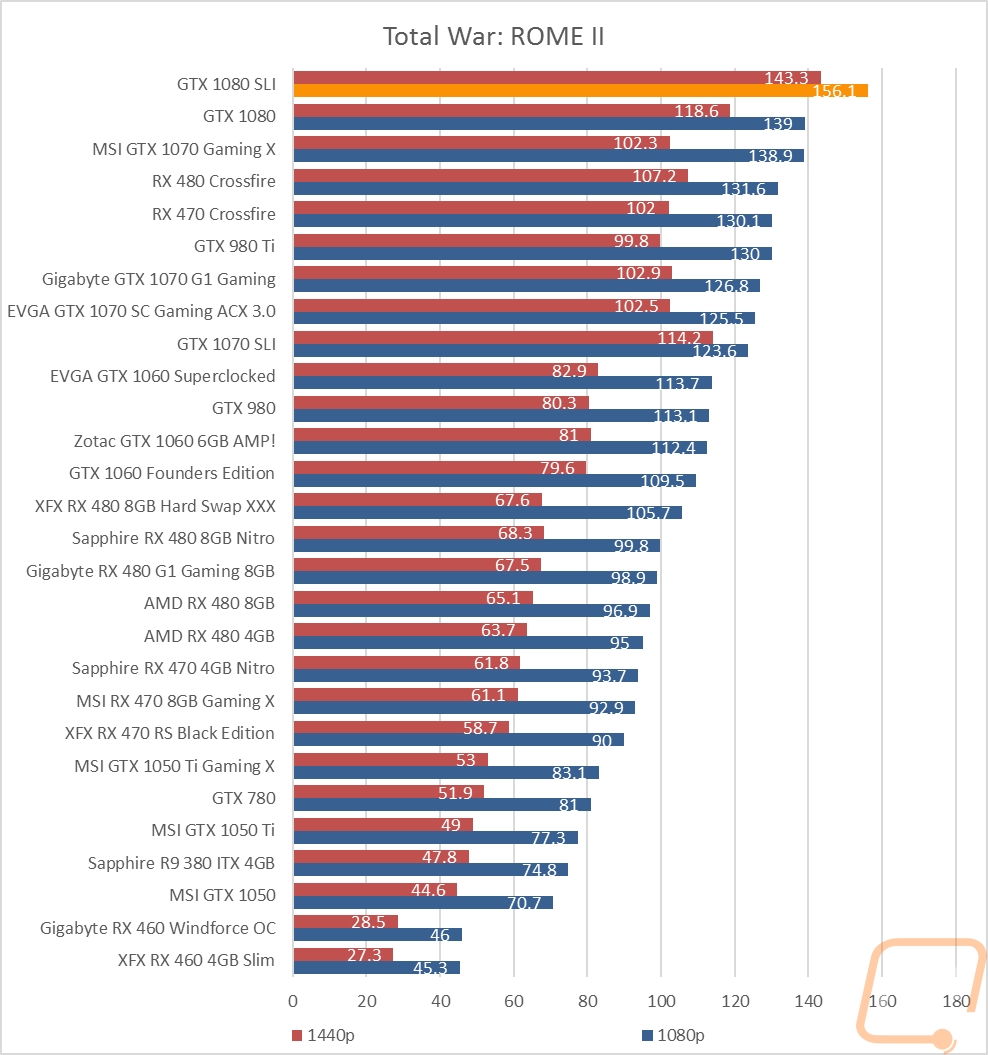
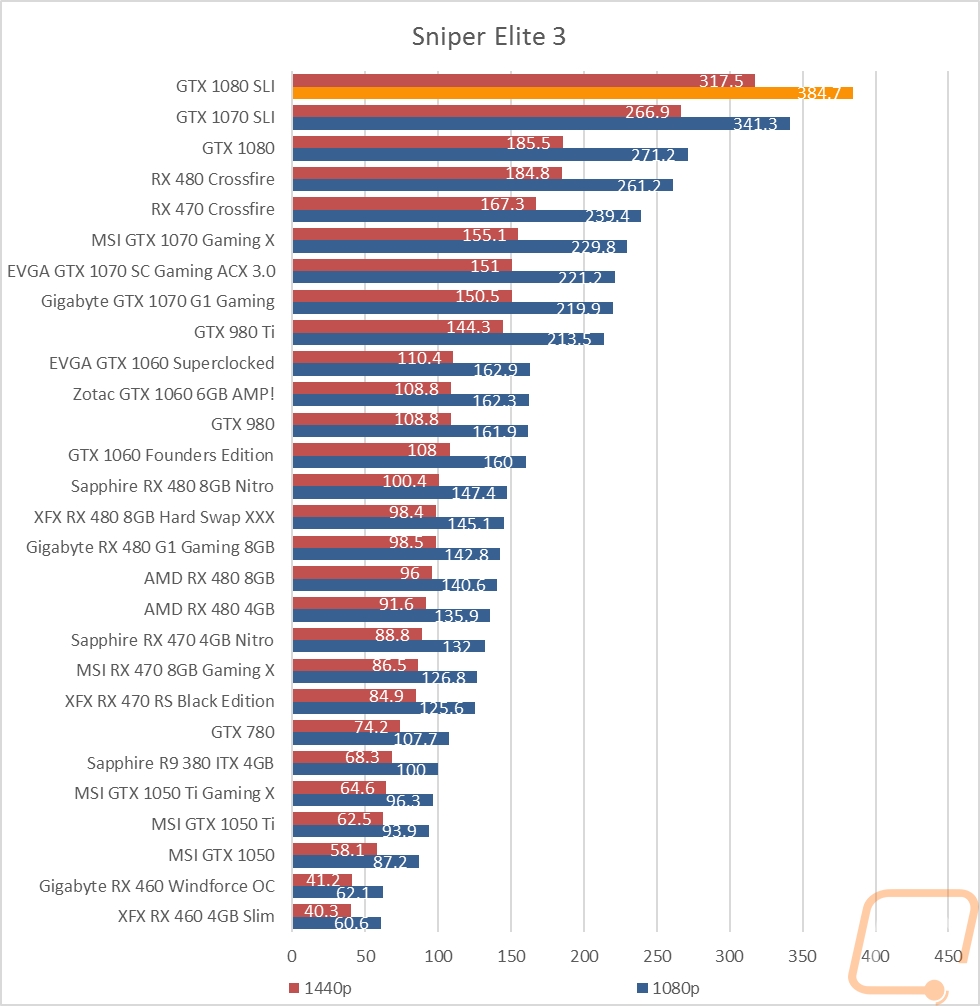
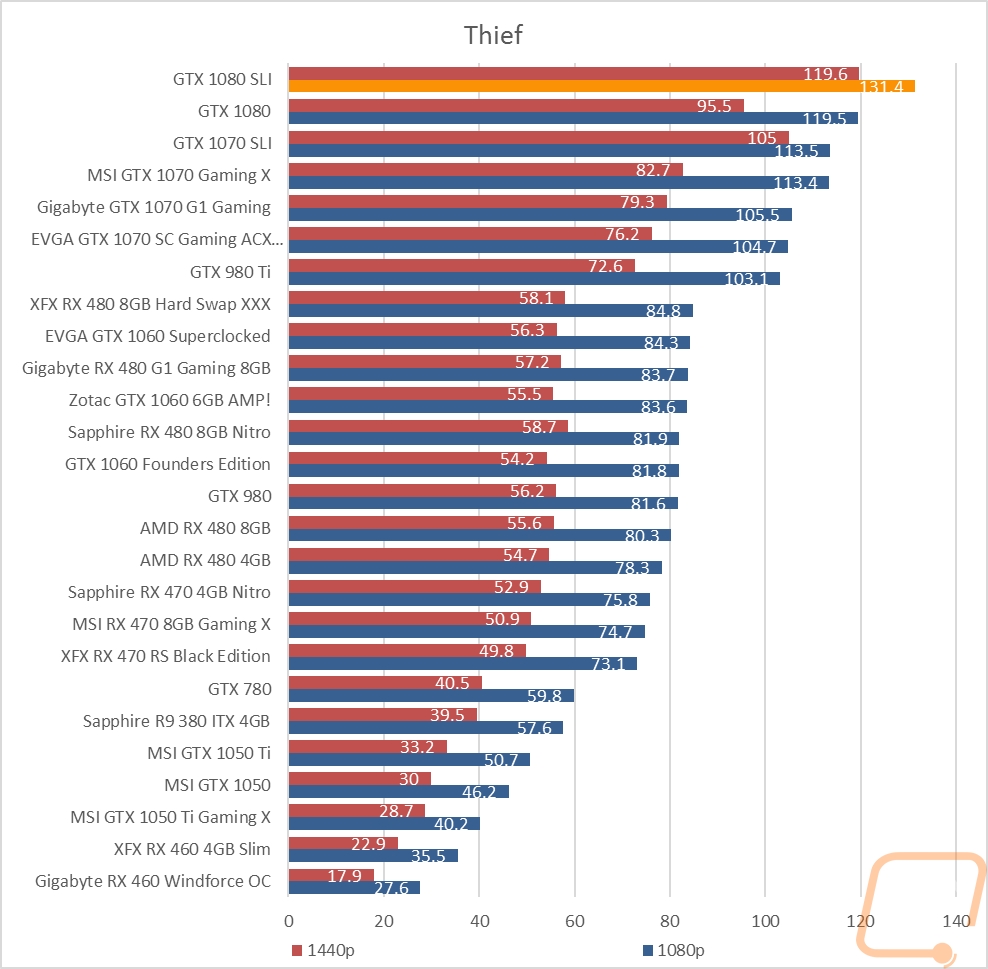
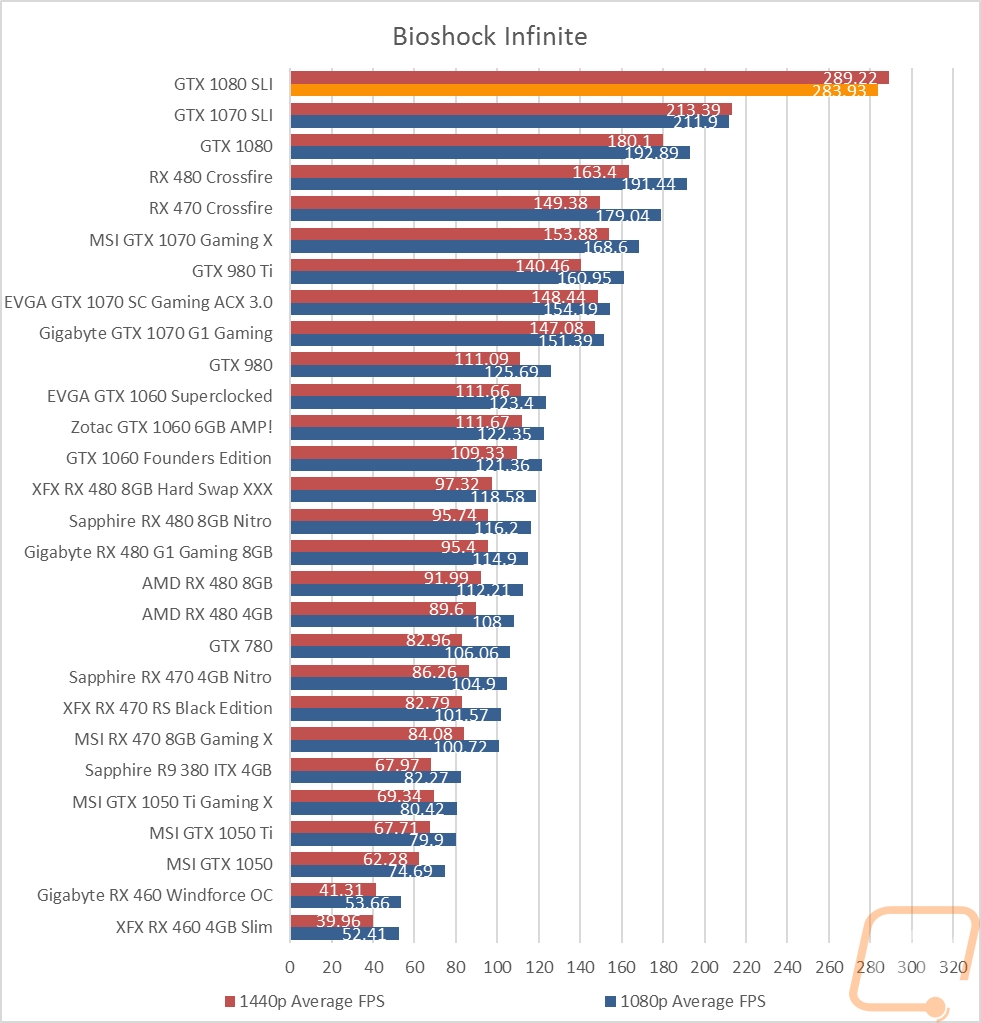
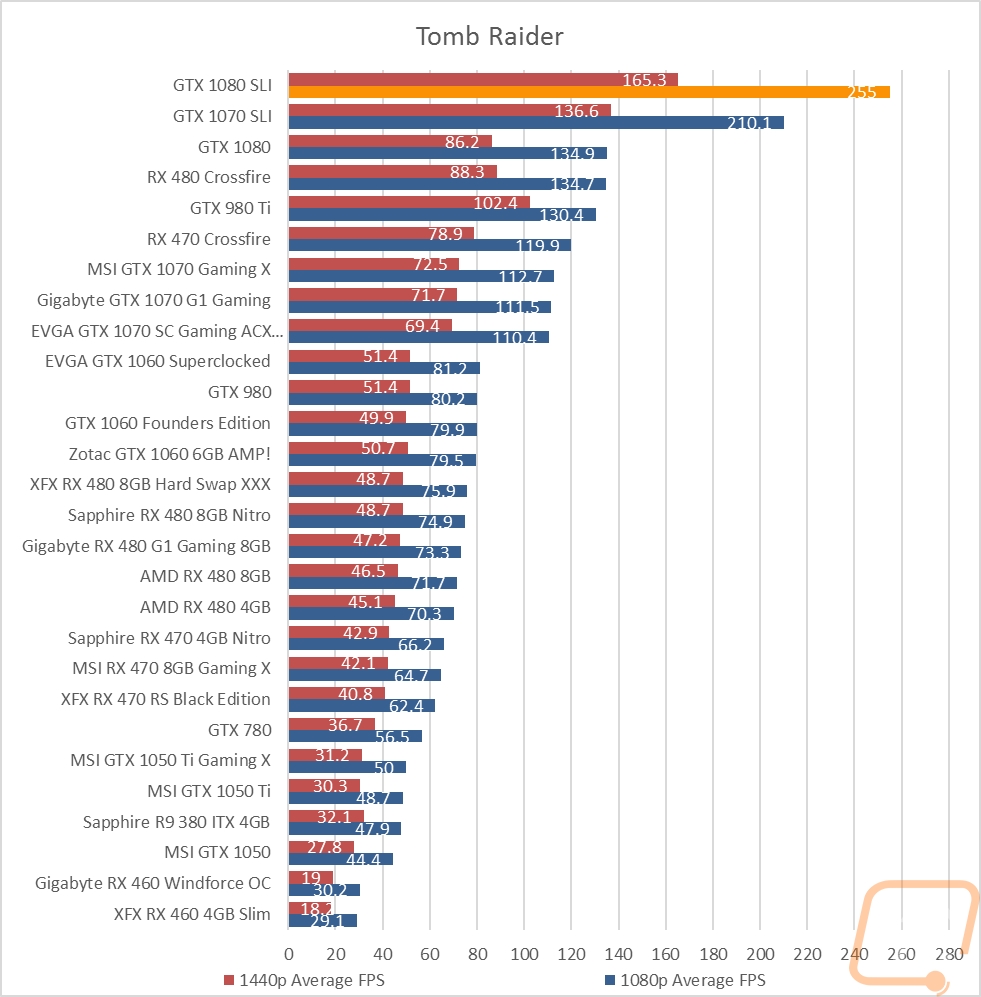
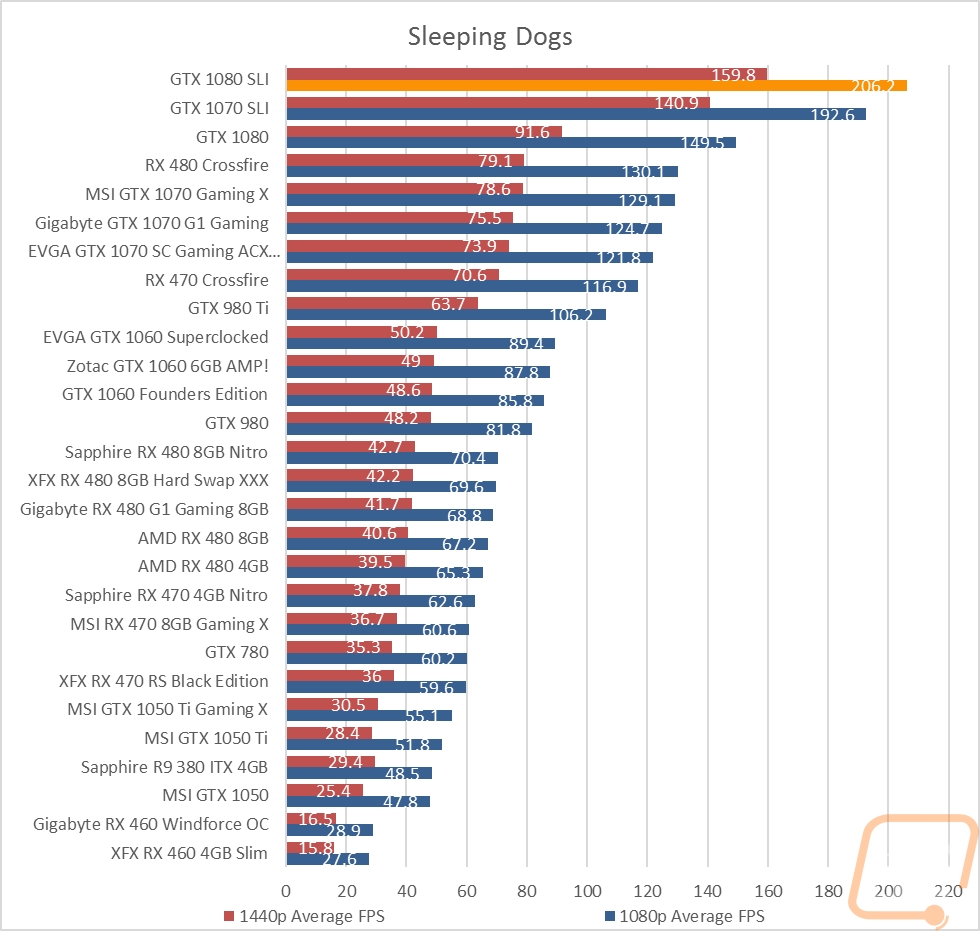
In Game Benchmarks Without SLI Support
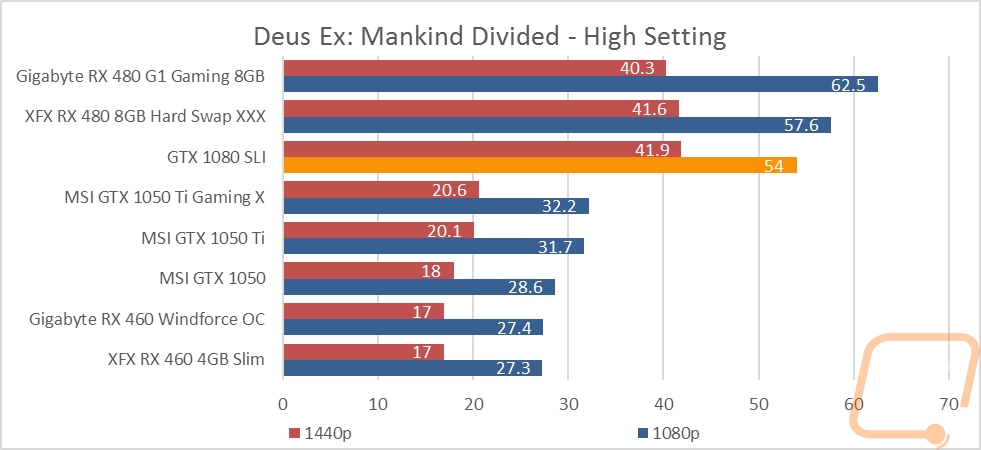
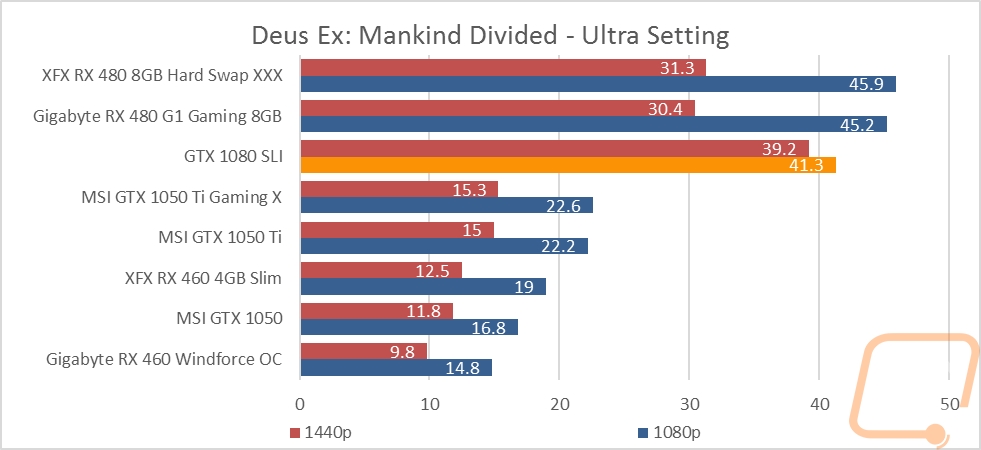
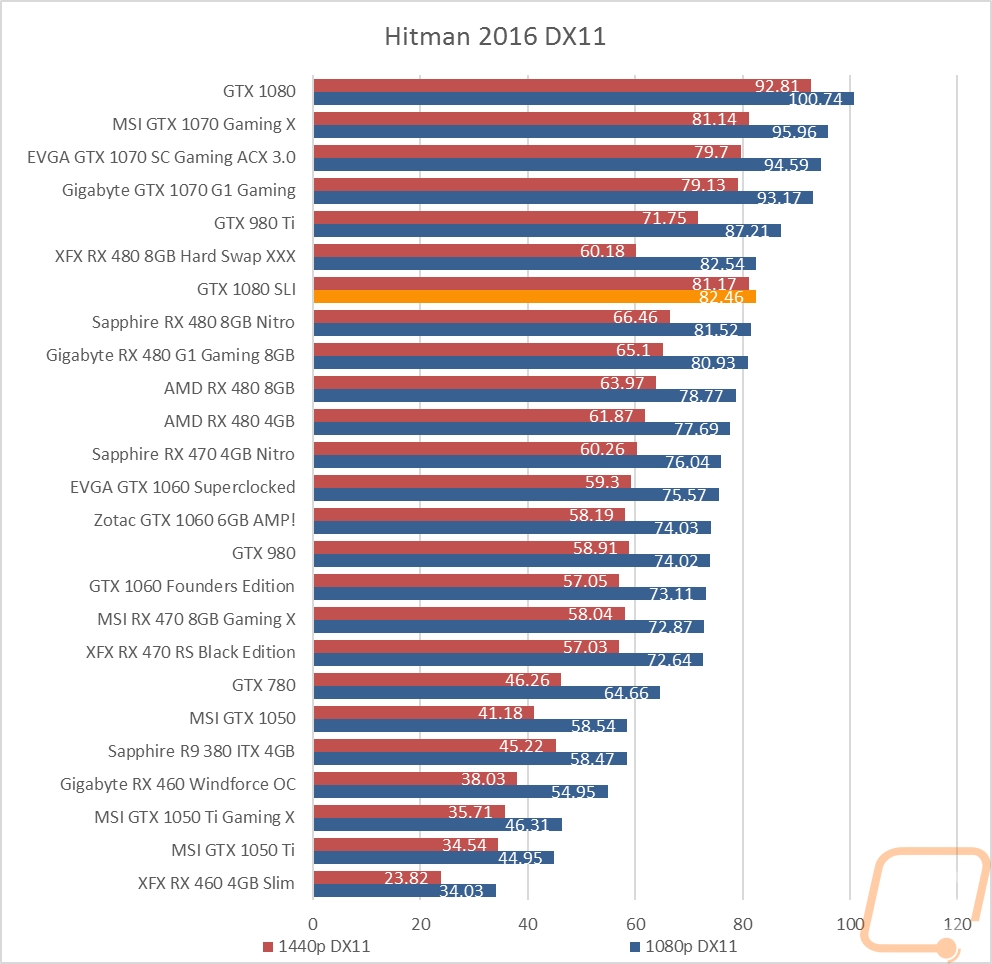
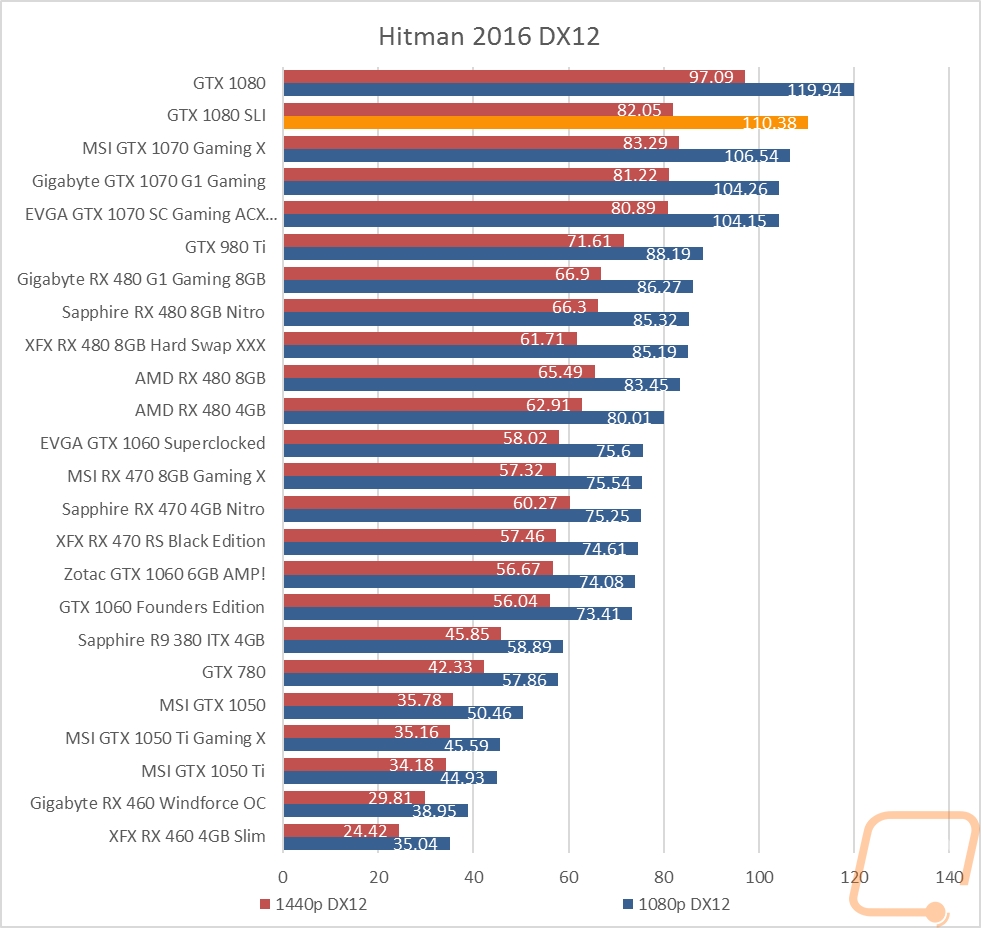
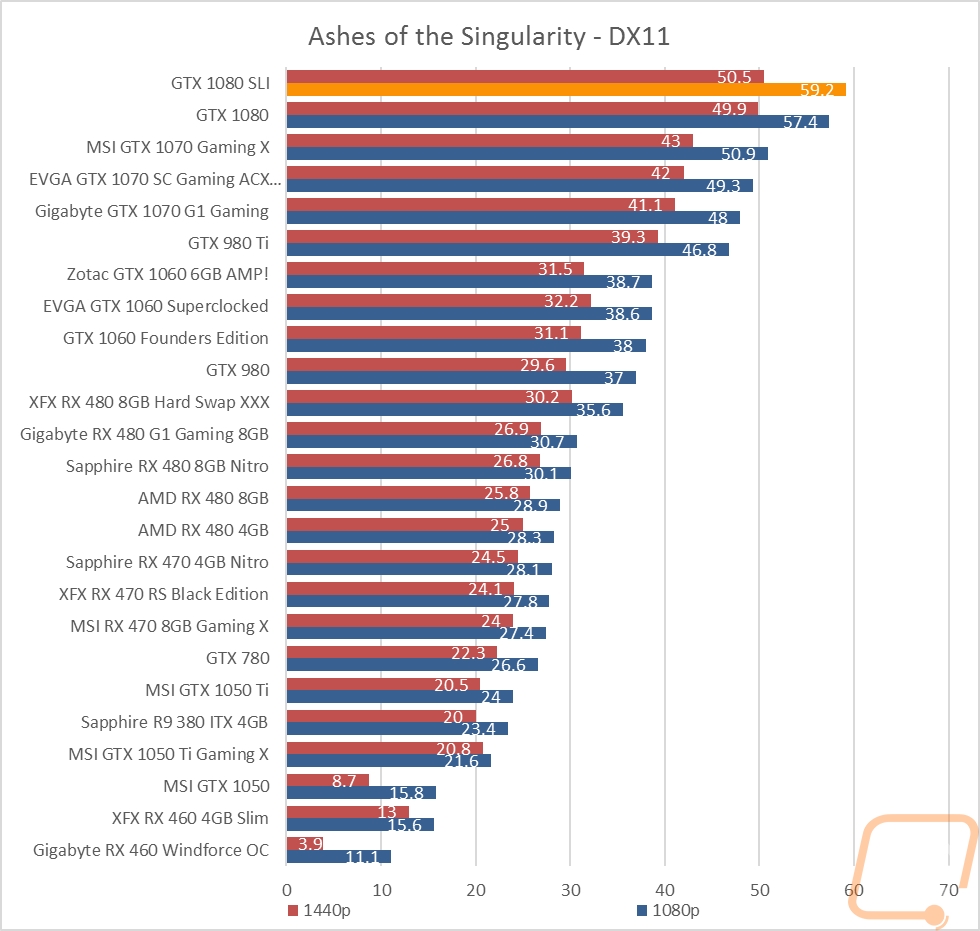
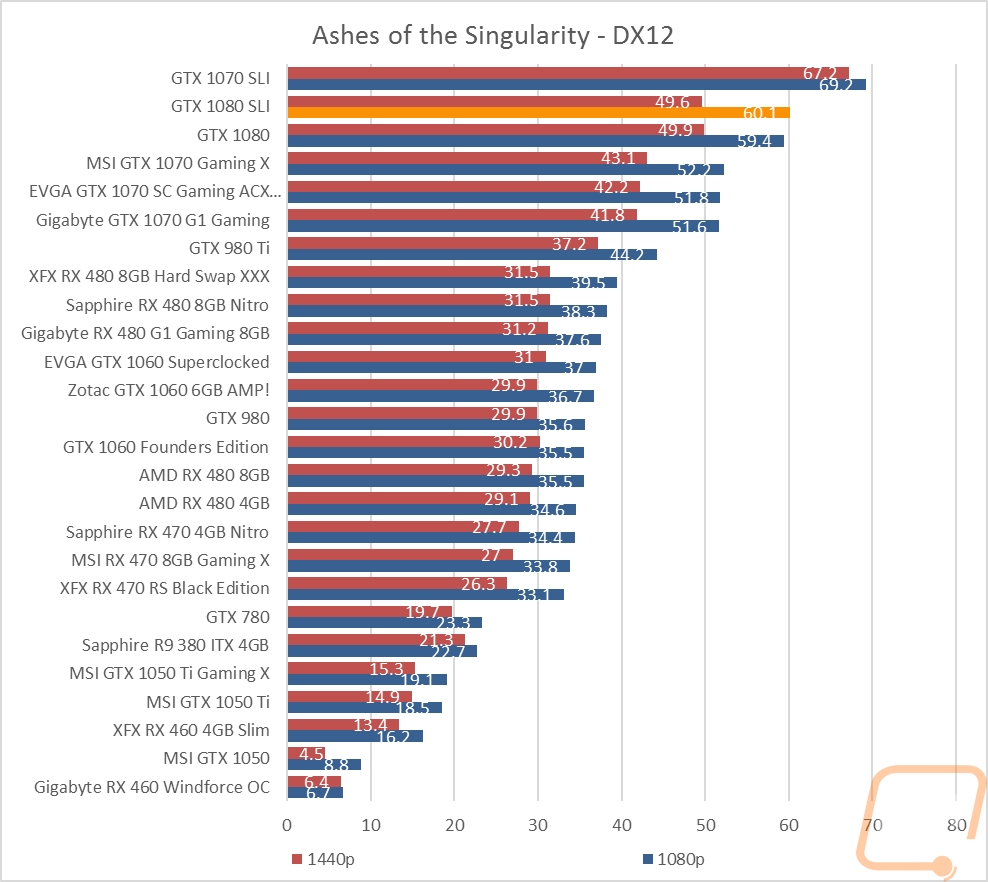
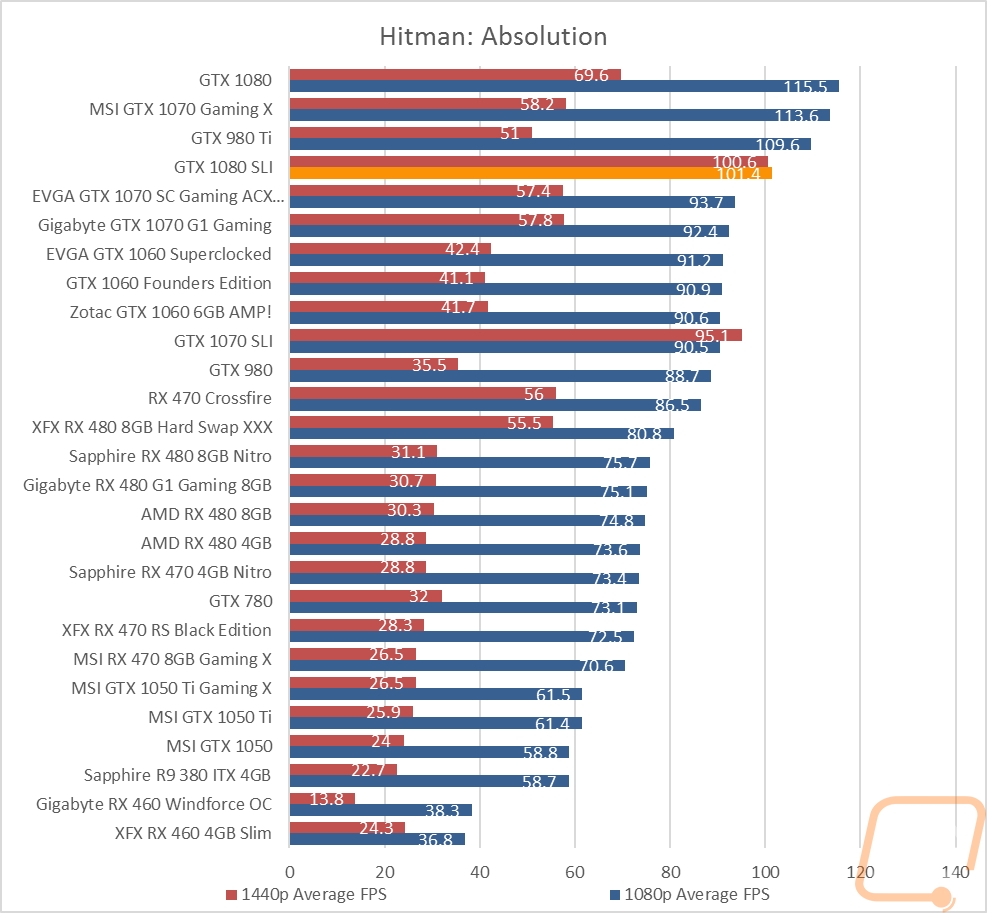
Power Usage and Final Throughs
The other aspect that we have to take into account when looking at doubling up video cards is just how much power the use. Sadly this is a slightly complicated issue. Unlike a single card, the results from our normal run through in Unigine Valley Benchmark may not show the full numbers if the program doesn’t support the 1080’s in SLI and that ended up being the case. You might have noticed that the two cards ended up putting up numbers just under the RX470 in Crossfire. This is 30 FPS less than the stock GTX 1080 and it is especially weird when you remember that the GTX 980’s in SLI did work about a year ago. So at 364 watts, is that a fair number? Well not really, I actually tested the two cards in our Crush project build using 3DMark Fire Strike that is completely supported to put the whole PC under load and saw 510 watts at peak. That is with more fans, a different CPU, and a couple more storage devices than our test bench but even so I can say with confidence that the GTX 1080’s should be in the 500-watt range at load (including the rest of the PC). Now that said, that is still an impressive number, especially considering the performance.
Read the above paragraph for a better idea of power usage
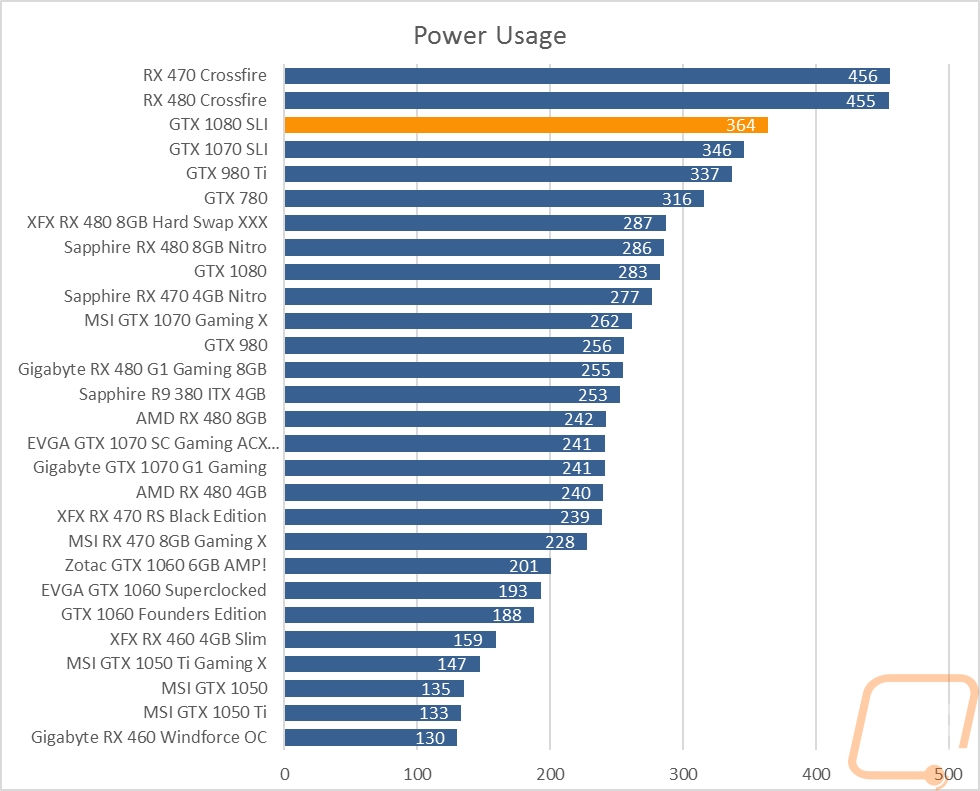
So, where do the GTX 1080’s stand? As always you really have to take into account what games you are playing. Nvidia does a good job of getting game day drivers and sometimes that does include SLI drivers. But not ever game will get SLI support and as we have seen there will be games and programs that have it then later lose the support as well. Getting a second card isn’t going to double your performance across the board, but it can help in a lot of games and Nvidia does seem to support a lot more games than AMD when it comes to multi-card support. The GTX 1080 itself is a strong performing card and for someone running at high resolutions, it might be the only option to get smooth gameplay. I for example game at 4k, that’s why I went with the GTX 1080’s for our Crush build. But go in knowing that a multi-card setup is going to have its up and downs.
Normally I would really be focusing on the pricing but that’s really only when we can sometimes find better performance with a pair of cheaper cards than picking up a single high-end card like a GTX 1080. When it comes to going SLI with two GTX 1080’s you have already thrown price out the window. A single Founders Edition card like what I tested with is going to run you about $700, that’s more than a lot of people will spend on their whole gaming PC. Getting two for $1400 and a high-resolution monitor or a multi-monitor configuration to justify the two 1080’s is well beyond anything logical. That doesn’t even include all of the other high-end components you will want to go with them. But it sure as is a lot of fun to game on!
Live Pricing: HERE




